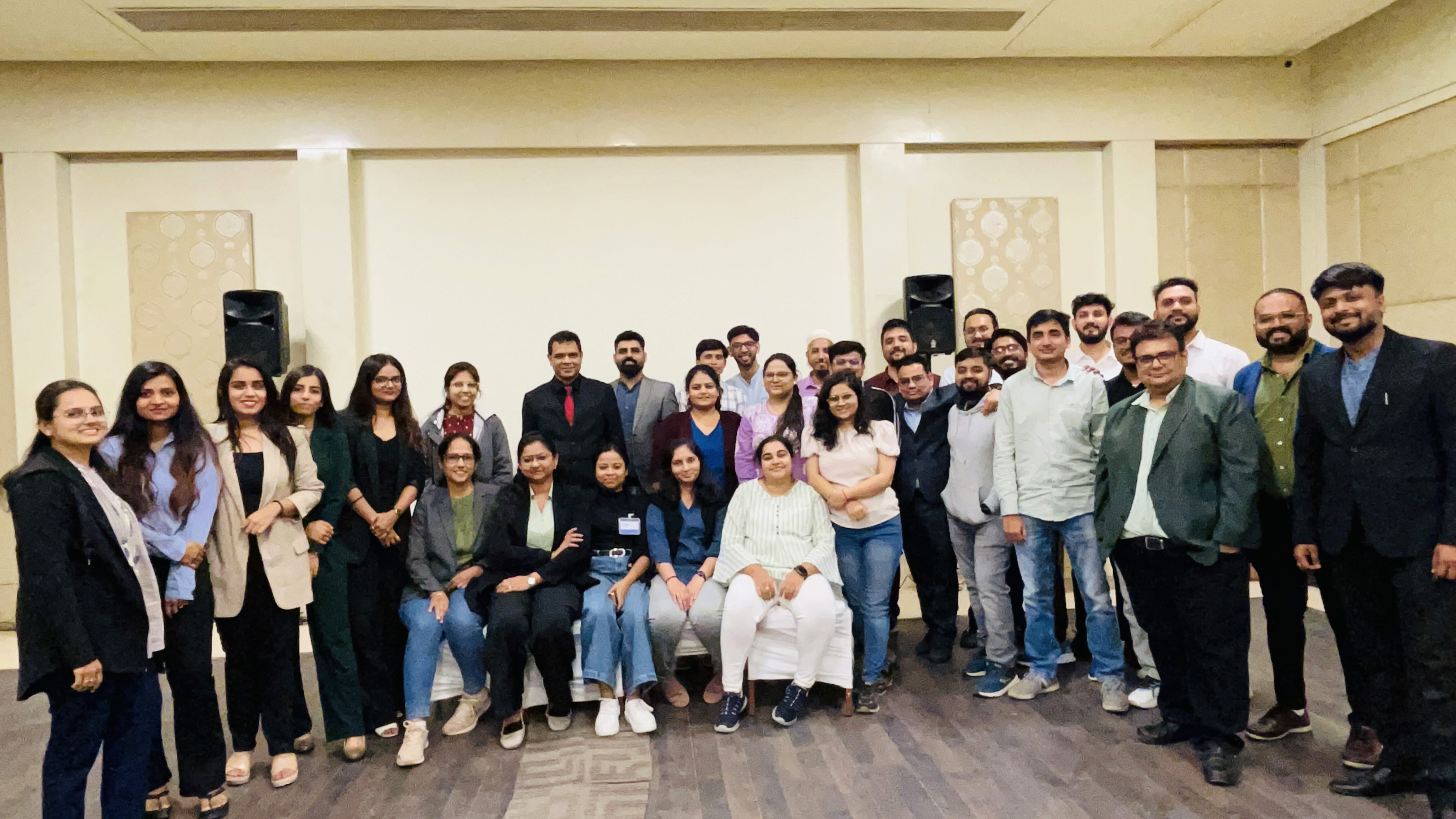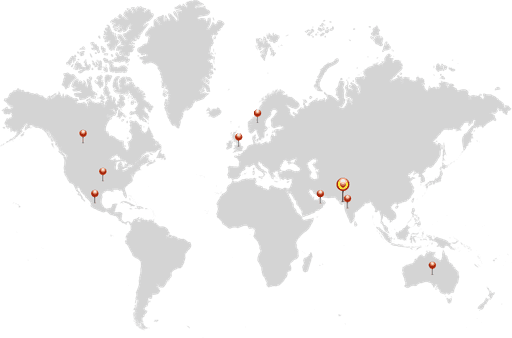In early March, when COVID-19 was still in its initial stage in many parts of the United States, healthcare witnessed RPA and AI, coming together and helping Boston fight the pandemic. Meanwhile, in the country of dragons, China, Zhongnan Hospital was using an AI-driven CT scan interpreter that identified COVID-19 in the absence of radiologists. History will observe such instances as an amalgamation of technologies like AI and RPA that helped overcome the rising panic and inconvenience of these hard times.
However, for countries with healthcare systems wholly dependent on traditional methods of operations and the third-world countries, the shockwaves of the loss they are facing during the pandemic will be felt for a long time to come.
While COVID-19 swamps countries all across, one thing is apparent - Healthcare systems are facing significant challenges. It’s obvious that the world will emerge out of this pandemic too, and when it does, the unheeded truths and inefficiencies of the healthcare system will stand wholly exposed!
It is time for a fresh, optimistic start for healthcare and to embrace new technologies.
Without further ado, here’s the BIG QUESTION:
Are Traditional Practices In Healthcare Really a Problem?
Amidst the rising price of healthcare and the ever-changing world outside the medical sector, people, to be precise patients, want most of the simple tasks to be done without much toil. The healthcare industry must be ready to face the new age challenges. The healthcare sector has seen decades of focus on physical activities, equipment, and hardware. It was all about doing everything manually!
The Innovations of the 21st century!
Healthcare observed a surge in medical wearables of all kinds. Then came the big data analytics helping the medical professionals to the extent that no one could have imagined before. Medical professionals and tech giants started focusing on finding out ways to make the healthcare sector more efficient. Traditional practices like inefficient manual processes and the complex payment modes have already begun to witness a significant impact with the introduction of RPA and the holy merger of AI and RPA.
We have already seen process automation taking incredible strides in various sectors by simplifying manual processes, achieving increased efficiency and reducing errors. Like any modern company, medical service providers are also exposed to the task of revamping their organization - as well as the entire internal processes - efficiently and cost-effectively. In healthcare, however, these challenges are subject to strict conditions. The quality of patient care must always be optimally guaranteed and - if possible - improved upon regularly.
The only approach that ensures a steady solution is RPA (Robotic Process Automation).
RPA Is The Need Of The Hour!
There’s a shortage of healthcare professionals.
A study by the Association of American Medical Colleges (AAMC) in 2017 indicated a shortfall of nearly 105,000 physicians by 2030.
Meanwhile, if we go with news reports, the shortage of medical resources is also one big reason why COVID-19 has taken such a massive toll on people’s lives.
The fact that we have a shortage is overwhelming, and it clearly shows the utter need to look for alternatives that can neutralize the deficit.
E-Prescribing and robotic dispensing
One way the healthcare sector is bringing a solution to this problem is through E-Prescribing and robotic dispensing. Setting up an integrated EP system in the hospital links patient data from the patient administration system, the pharmacy system, pathology system, nurse administration system, chemotherapy medication system, and others. This way, there's no shortage of relevant patient data anywhere in the healthcare facility.
Finally, all this data is linked to the robots that are being used in the pharmacy. When the patient visits the pharmacy, the robot can help the hospital as well as the patient yield maximum benefits of the system by proper drug selection and prescription with the help of the patient's data.
People are aging!
We can’t ignore the fact that a significant part of the population in the U.S. and around the world is aging.
A Harvard study revealed that over the next two decades, more than 27.7 million people would join the 50-and over age group.
With the country’s diabetic history that has been haunting the U.S. for a long time now, this figure adds to the worries. In countries that are developed and industrialized, increasing life expectancy is already placing a significant burden on medical care. The healthcare sector is also facing concerns when it comes to older patients. The most vulnerable ones have to be continuously monitored in the presence of a healthcare professional.
RPA for Remote Patient Monitoring
To give you a fair idea of how RPA is already helping medical professionals, consider this app developed by a startup for private and public healthcare providers. The aim here is to assist millions of patients without them requiring to pay a visit. Patients are getting facilities like self-assessment, test interpretation and self-monitoring through chatbot, and automation technology at a few clicks on their phone screens. The automation technology further directs the patient to visit a care facility, call their doctor, or to continue self-monitoring, based on symptoms that the user reports.
The recommendations provided by the app are automated, and doctors do not need to intervene or monitor patients in monitoring patients with the mildest of symptoms. They can remain committed to engaging with the ones who need urgent attention.
Repetitive and backend tasks consume enough workforce.
Most of us have seen the wonders that automation can bring to us. Want a haircut? Just open an app, schedule your appointment, and get rid of the waiting line. Dinner with the family? Book a table from home and reach on time after completing your chores. Similarly, there are processes in the healthcare sector that don’t require much human intervention, and simple automation of the task can free individuals and let them focus on more crucial tasks.
RPA in Medical Billing
Automated billing has proved to be the lifesaver for many practitioners across the world. An automated billing system can keep track of the patient's bills and claims from the first visit itself. RPA can help reduce the errors in the calculation of covered treatments and coverage amounts, thereby eradicating any chances of miscalculation of claims or the amount to be paid.
This way, healthcare professionals can help reduce their chances of improper payments, which was worth $36.21 billion in the FY2017, according to the Centers for Medicare & Medicaid Services (CMS). Out of this amount, a significant part was due to documentation errors. Automated billing is ultimately helping hospitals save enough money, which could have been wasted.
You see how RPA can be the solution, right?
People want their data on the go.
AI and RPA technologies will help make medical care more patient-focused again. Ultimately, doctors will have less paperwork and administrative tasks and can instead concentrate on patient care.
Researchers from the Dartmouth-Hitchcock health system, the American Medical Association (AMA), Sharp End Advisory, and the Australian Institute of Health Innovation found that physicians spend almost 50 percent of their time in clerical and documentation work. This brings a considerable decrease in their productivity and the time they can dedicate to monitor patients.
Similarly, the advent of RPA in the healthcare sector will also bring a change in how reports get delivered to the patients. People can receive their lab test results on their phones with just a few clicks and without needing any lab technician to attend them. Amazing, isn’t it?
So, is our healthcare sector ready for the next big thing?
A recent study from the Congressional Budget Office suggests that in case hospitals fail to increase their productivity rates, 51 percent to 60 percent of them could have negative margins by 2025.
If you have not yet launched your RPA journey, there are chances of your healthcare model collapsing soon. RPA is the need of the hour, and the healthcare sector has started implementing it. The sector has a huge potential for automation and reducing wastage of humane energy on repetitive tasks.
Summarizing it all,
There was a time when marketers used to say: If you run a business and you are not on the internet, you will die. The same now applies to a hospital that doesn’t adopt RPA and its features.
To learn more about automating the processes in your healthcare organization with RPA solutions, get in touch with our expert advisors.

We are a family of Promactians
We are an excellence-driven company passionate about technology where people love what they do.
Get opportunities to co-create, connect and celebrate!
Vadodara
Headquarter
B-301, Monalisa Business Center, Manjalpur, Vadodara, Gujarat, India - 390011
Ahmedabad
West Gate, B-1802, Besides YMCA Club Road, SG Highway, Ahmedabad, Gujarat, India - 380015
Pune
46 Downtown, 805+806, Pashan-Sus Link Road, Near Audi Showroom, Baner, Pune, Maharashtra, India - 411045.
USA
4056, 1207 Delaware Ave, Wilmington, DE, United States America, US, 19806

Copyright ⓒ Promact Infotech Pvt. Ltd. All Rights Reserved

We are a family of Promactians
We are an excellence-driven company passionate about technology where people love what they do.
Get opportunities to co-create, connect and celebrate!
Vadodara
Headquarter
B-301, Monalisa Business Center, Manjalpur, Vadodara, Gujarat, India - 390011
Ahmedabad
West Gate, B-1802, Besides YMCA Club Road, SG Highway, Ahmedabad, Gujarat, India - 380015
Pune
46 Downtown, 805+806, Pashan-Sus Link Road, Near Audi Showroom, Baner, Pune, Maharashtra, India - 411045.
USA
4056, 1207 Delaware Ave, Wilmington, DE, United States America, US, 19806

Copyright ⓒ Promact Infotech Pvt. Ltd. All Rights Reserved
